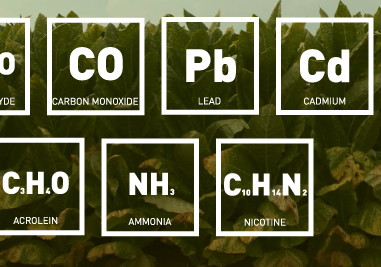Cigarettes
On this page:
- Statistics about Cigarette Use
- FDA Regulation of Cigarettes
- Manufacturing Cigarettes
- Retail Sales of Cigarettes
- Importing Cigarettes
- Reporting Adverse Experiences and Product Violations
Note: In April 2021, FDA announced its plans to propose tobacco product standards within the next year to ban menthol as a characterizing flavor in cigarettes and ban all characterizing flavors (including menthol) in cigars. Read more.
The basic components of most cigarettes are tobacco, chemical additives, a filter, and paper wrapping. Cigarettes are responsible for the vast majority of all tobacco-related disease and death in the United States. Smokers are exposed to a toxic mix of over 7,000 chemicals when they inhale cigarette smoke.1 The harmful chemicals in cigarette smoke can damage nearly every organ in the body.2 Nonsmokers are exposed to many of these same chemicals through secondhand smoke.
Statistics about Cigarette Use
- Every day, on average, about 1,500 youth aged 12-17 smoke their first cigarette and more than 200 youth under aged 12-17 become daily smokers.3
- Nationwide, 4.6 percent of high school students (710,000 ) and 1.6 percent of middle school students (190,000) currently smoke cigarettes.4
Chemicals in Cigarettes:
From Plant to Product to Puff
Order free FDA posters on the health consequences of tobacco use
FDA Regulation of Cigarettes
FDA regulates the manufacture, import, packaging, labeling, advertising, promotion, sale, and distribution of cigarettes, including components, parts, and accessories, under the Federal Food, Drug, and Cosmetic Act (FD&C Act) and its implementing regulations.
Learn more about federal requirements limiting the sale, distribution, and marketing of cigarettes.
In July 2017, the FDA announced a comprehensive plan for tobacco and nicotine regulation that will serve as a multi-year roadmap to better protect kids and significantly reduce tobacco-related disease and death, including pursuing lowering nicotine in cigarettes to a minimally addictive or non-addictive levels. In April 2021, FDA announced that it plans to propose tobacco product standards to ban menthol as a characterizing flavor in cigarettes.
“Heated tobacco products” and “heat-not-burn tobacco products” are colloquial terms that do not appear to have universally agreed upon definitions and seem to be used interchangeably. For FDA’s purposes, if a tobacco product meets the legal definition of a cigarette but the tobacco is not heated to a temperature high enough to cause combustion, the product would be currently categorized as a “non-combusted cigarette” and regulated as a cigarette.
_________________________
Manufacturing Cigarettes
If you make, modify, mix, manufacture, fabricate, assemble, process, label, repack, relabel, or import cigarettes, you must comply with these requirements for manufacturers.
CTP’s Office of Small Business Assistance can answer specific questions about requirements of small businesses and how to comply with the law. This office also provides online educational resources to help regulated industry understand FDA regulations and policies.
_________________________
Retail Sales of Cigarettes
If you sell cigarettes, please read this summary of federal rules that retailers must follow. In addition, our website provides more information on regulations, guidance and webinars for retailers.
Note: On December 20, 2019, the President signed legislation to amend the Federal Food, Drug, and Cosmetic Act, and raise the federal minimum age of sale of tobacco products from 18 to 21 years. It is now illegal for a retailer to sell any tobacco product – including cigarettes, cigars and e-cigarettes – to anyone under 21. FDA will provide additional details on this issue as they become available, and the information on this page will be updated accordingly in a timely manner.
Importing Cigarettes
Tobacco products imported or offered for import into the United States must comply with all the applicable requirements under the Federal Food, Drug, and Cosmetic Act (FD&C Act). You can find more information on the Importing and Exporting webpage.
You can also learn more about the importation process in the FDA Regulatory Procedures Manual, Chapter 9, Import Operations and Actions.
If you have questions about importing a specific tobacco product, please contact the FDA district into which your product will be imported.
Reporting Adverse Experiences and Product Violations
If you have experienced an unexpected health or safety issue with a specific tobacco product, you can report your adverse experience to FDA. Knowledge about adverse experiences can help FDA identify health or safety issues beyond those normally associated with product use.
If you believe these products are being sold to minors, or you see another potential violation of the FD&C Act or FDA’s tobacco regulations, report the potential violation.
Additional Resources
- Cigarette Labeling and Health Warning Requirements
- Chemicals in Cigarettes: From Plant to Product to Puff
- Small Business Assistance for Tobacco Product Industry
- Manufacturing
- Selling Tobacco Products in Retail Stores
- Menthol and Other Flavors in Tobacco Products
1. U.S. Department of Health and Human Services (USDHHS). A Report of the Surgeon General: How Tobacco Smoke Causes Disease: What It Means to You (Consumer Booklet). Atlanta, GA: U.S. Department of Health and Human Services, Centers for Disease Control and Prevention, National Center for Chronic Disease Prevention and Health Promotion, Office on Smoking and Health; 2010.
2. U.S. Department of Health and Human Services (USDHHS). How Tobacco Smoke Causes Disease: The Biology and Behavioral Basis for Smoking-Attributable Disease: A Report of the Surgeon General. Atlanta, GA: U.S. Department of Health and Human Services, Centers for Disease Control and Prevention, National Center for Chronic Disease Prevention and Health Promotion, Office on Smoking and Health; 2010.
3. Substance Abuse and Mental Health Services Administration. (2020). Key substance use and mental health indicators in the United States: Results from the 2019 National Survey on Drug Use and Health (HHS Publication No. PEP20-07-01-001, NSDUH Series H-55). Rockville, MD: Center for Behavioral Health Statistics and Quality, Substance Abuse and Mental Health Services Administration.
4. Gentzke AS, Wang TW, Jamal A, et al. Tobacco Product Use Among Middle and High School Students — United States, 2020. MMWR Morb Mortal Wkly Rep 2020;69:1881–1888.



